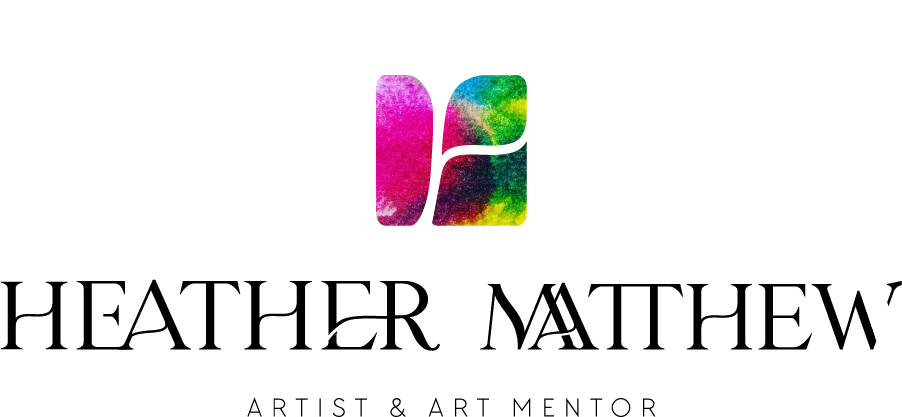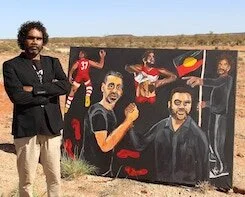Pretty or Pretty Confronting?
Vincent Namatjira in front of his Archibald prize winning painting Stand Strong for Who You Are, 2020.
Is art meant to be pretty? Yes or no? Is it what you buy to hang on the wall at home? Or is it challenging, sometimes uncomfortable, something that confronts you and calls out your prejudices, reveals inner emotion and can’t let you forget it.
Both answers are correct. Yes art is something we like to hang on our walls, maybe because it makes us feel happy or reminds us of people or landscapes, or the colours appeal to us.
Yet the art that stands the test of time is art that disrupts the narrative. That calls us to see things from a different perspective, that can draw us into our emotions and take us on an inner, life changing journey.
We won’t forget the name of a tiny Spanish town in the Basque region which was nearly obliterated during the Spanish Civil War when General Franco’s approved the blitzkrieg bombing in 1937. All thanks to Picasso and his seminal 7.7metre long painting Guernica. Not one for the lounge room wall.
Art is also an agent for cultural change.
Today is the beginning of NAIDOC week, National Aborigines and Islanders Day Observance Committee. This year’s theme is Heal Country.
The NAIDOC website defines country: “It is more than a place. When we talk about Country it is spoken of like a person.”
Country has forever been embedded into our cultural concept of Australia by Indigenous artist Albert Namatjira. Through his paintings we are led into his country, the rich colours of Central Australia shimmering in the desert light. Country as a palpable, living presence.
In the recent series Finding the Archibald, Australian actor Rachel Griffith finished her quest to find one portrait that captures the changing face of the nation over the history of the 100 year old often controversial art prize. .She chose two. She said It was because they were so important together. See her speech here.
The first was the portrait of Albert Namatjira by William Dargie which won the Archibald prize in 1957. The second was the painting Studio Self Portrait by Namatjira’s grandson, Vincent Namatjira which was highly commended in the Archibald Prize 2018.
Vincent Namatjira went on to become the first Indigenous Australian artist to win the Archibald in 2020 for his painting, Stand Strong for Who You Are.
As Rachel said about her choice of paintings; “there was something radical about Dargie saying this man is a distinguished Australian.’’ This was painted at a time when “First Nations people were forcibly being removed from their families”. They were not even citizens in their own land.
Indigenous artist and activist Richard Bell famously said “my art is an act of protest”. He gate-crashed the Venice Biennale with a floating replica of the Australian Pavilion in chains which he then sailed through the Venice lagoons.
His work Embassy 2013 is a military type tent surrounded by protest signs and slogans which reference the first Aboriginal Tent Embassy erected at Parliament House, Canberra in 1972. The Tent Embassy is still there on the grounds of the former Parliament House, now the National Museum of Australia. Art reflecting life etc.
I heard an interview with a gallery curator who said he looks for artists “ who have something to say”. For me this week, it’s inspiring to think that Australian Indigenous art and artists can lead us on our journey to change the way Australians see themselves, not only on country, but also on the world stage.
Pablo Picasso, Guernica 1937





